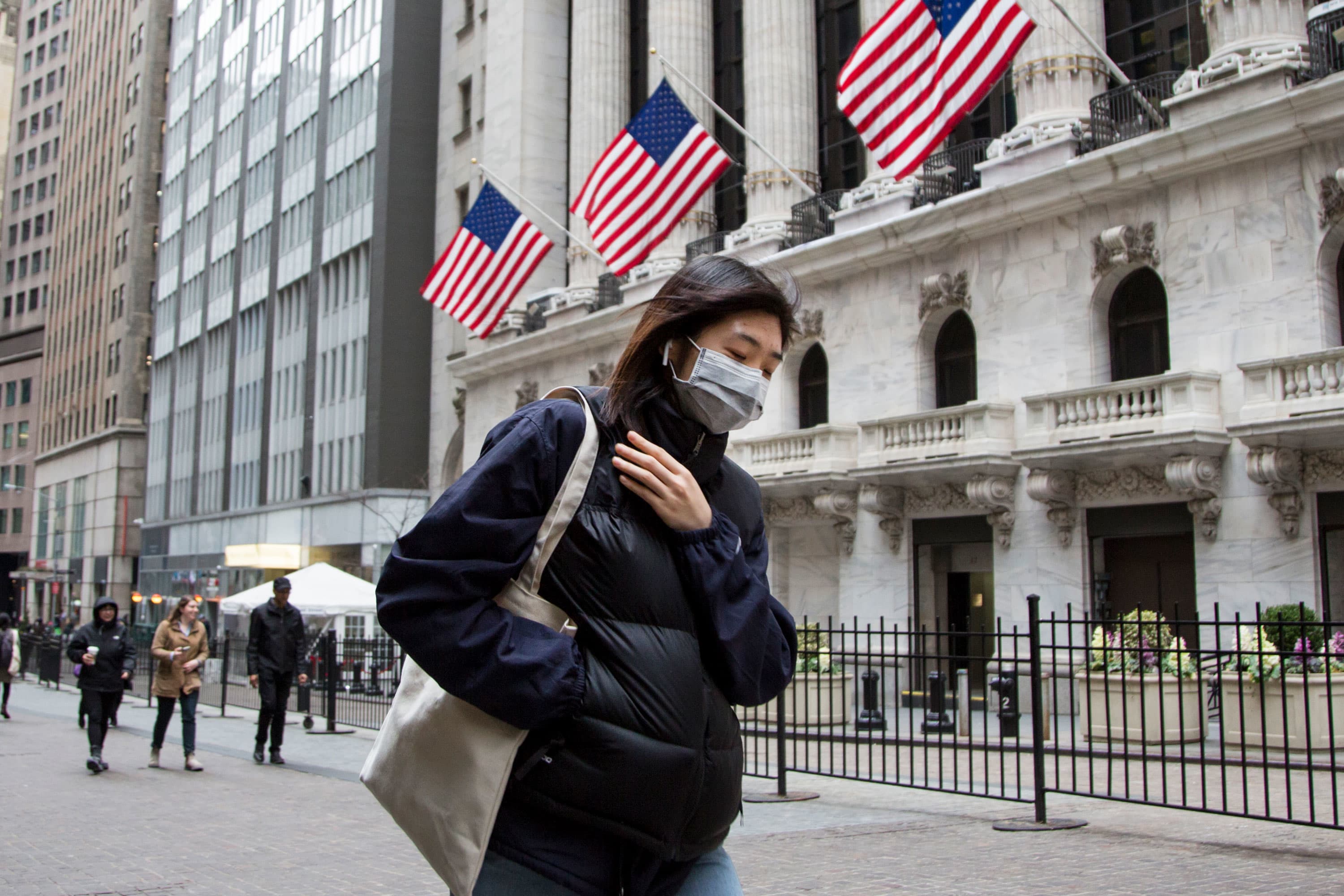Products You May Like
Two years ago, on March 16, 2020, stock markets suffered a one-day 12% drop.
From Feb. 19 to March 23 of that year, when the S&P 500 Index finally hit bottom, it lost about 34% of its value.
Yet for retail investors, new lessons on investing were just beginning as the market underwent an historic rebound.
The aftermath of the onset of the Covid-19 pandemic prompted a dramatic loss of income for many households.
More from Personal Finance:
Other retirees could take Tom Brady’s cue and return to the workforce
Why the Federal Reserve raises interest rates to combat inflation
Cars leased in 2019 are now worth $7,200 more than expected
For others, it created an opportunity to save more amid unprecedented stay-at-home rules and government stimulus checks.
Research suggests 10% to 15% of those one-time government payments were invested in the stock market.
“Betting on stocks was one of the few things you could continue to do,” said Dan Egan, vice president of behavioral finance and investing at Betterment.
That set the stage for the rise of so-called meme stocks that saw their stock prices soar.
Two years later, those stocks, and investor expectations, have mostly come back to earth.
Yet inflation has spiked. Morningstar predicts prices will continue to run hot for the next couple of months, and potentially moderate in the second half of the year.
Meanwhile, concerns about the Russia-Ukraine war are expected to continue to whipsaw the markets in the short term. There are some tried and true lessons investors may apply today.
‘There is no safer time’
Headlines about the Russia-Ukraine conflict may give investors pause as to whether now is the time to put their money in.
“Should you defer investing for a safer period?” Egan said. “The answer is no. There is no safer time.”
You should feel that sense of market risk.Dan Eganvice president of behavioral finance and investing at Betterment
One thing that may help calm investors’ jitters is that today’s risks are relatively well known. We have been through gas and oil supply shocks before, Egan said. What’s more, the Federal Reserve has greater policy levers at its disposal.
Conversely, the scariest market Egan said he’s experienced was in 2017, when the market went straight up and didn’t even experience a 5% drop over the course of the year.
“That was the scariest market to be in, because it felt like there was no risk,” Egan said. “You should feel that sense of market risk.”
Do a gut check on your risk exposure
As markets fluctuate, do a gut check to see how you feel.
“If you are selling when the markets have already sold off, that’s probably a good indicator that you had more risk than your individual risk appetite allows,” said David Sekera, chief U.S. market strategist at Morningstar.
Ideally, your portfolio should not only have a healthy division between equities and bonds, but also across different sectors and categories, Sekera said. That can help pare losses as markets are down overall, for example, but sectors like energy have performed well.
Consider rebalancing to get back to your long-term allocations. That may include reallocating assets that have performed well into those that have underperformed.
“Having that proper diversification is certainly going to help investors in the long run,” Sekera said.
Only gamble with funds you don’t need
Generally, you should have at least three to six months of liquid savings set aside in case of an emergency. That way, if something happens, like losing your job, you’re insured against the downside, Egan said.
What’s more, you should be investing ample funds for retirement, whether it be in an employer-sponsored retirement plan or an individual retirement account.
“Once you have all those fulfilled and funded, feel free to gamble,” Egan said.
Importantly, those bets should be made with the expectation that you will lose money, not make money, he said.
“If you enjoy doing it as a kind of experience, do it with money that’s excess, that you’re perfectly happy losing,” Egan said.
Set yourself up to make good decisions
Other activities that put you in a better frame of mind should also be a top priority, Egan said.
Make time to go outside and exercise, and prioritize sleep by turning your mobile screens off by a certain hour.
“All of those things are not avoiding the problem,” Egan said. “They are making sure you have the mental and physical resources, so that when you’re going to go in and make a decision, you’re making it in a good healthy state of mind.”
